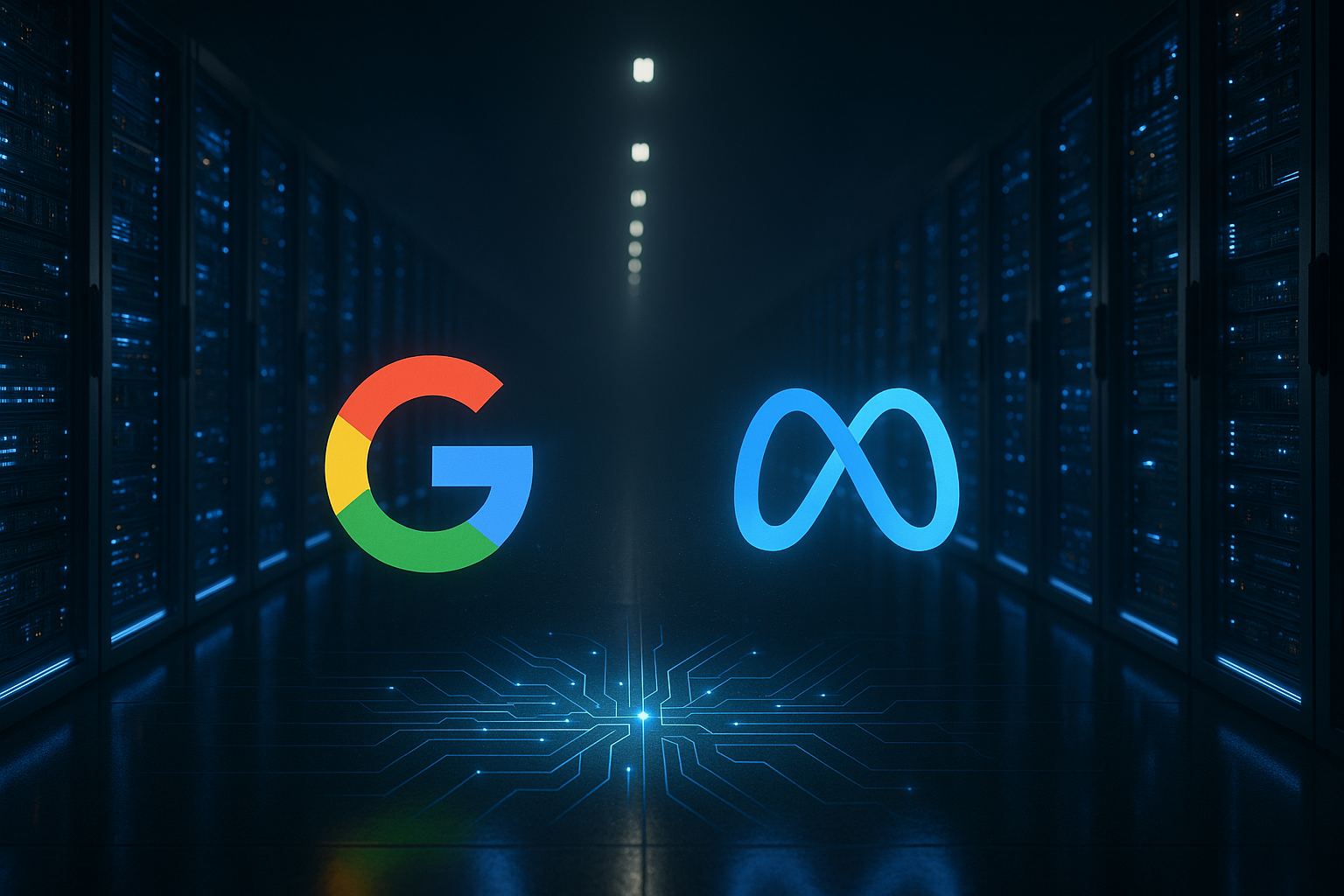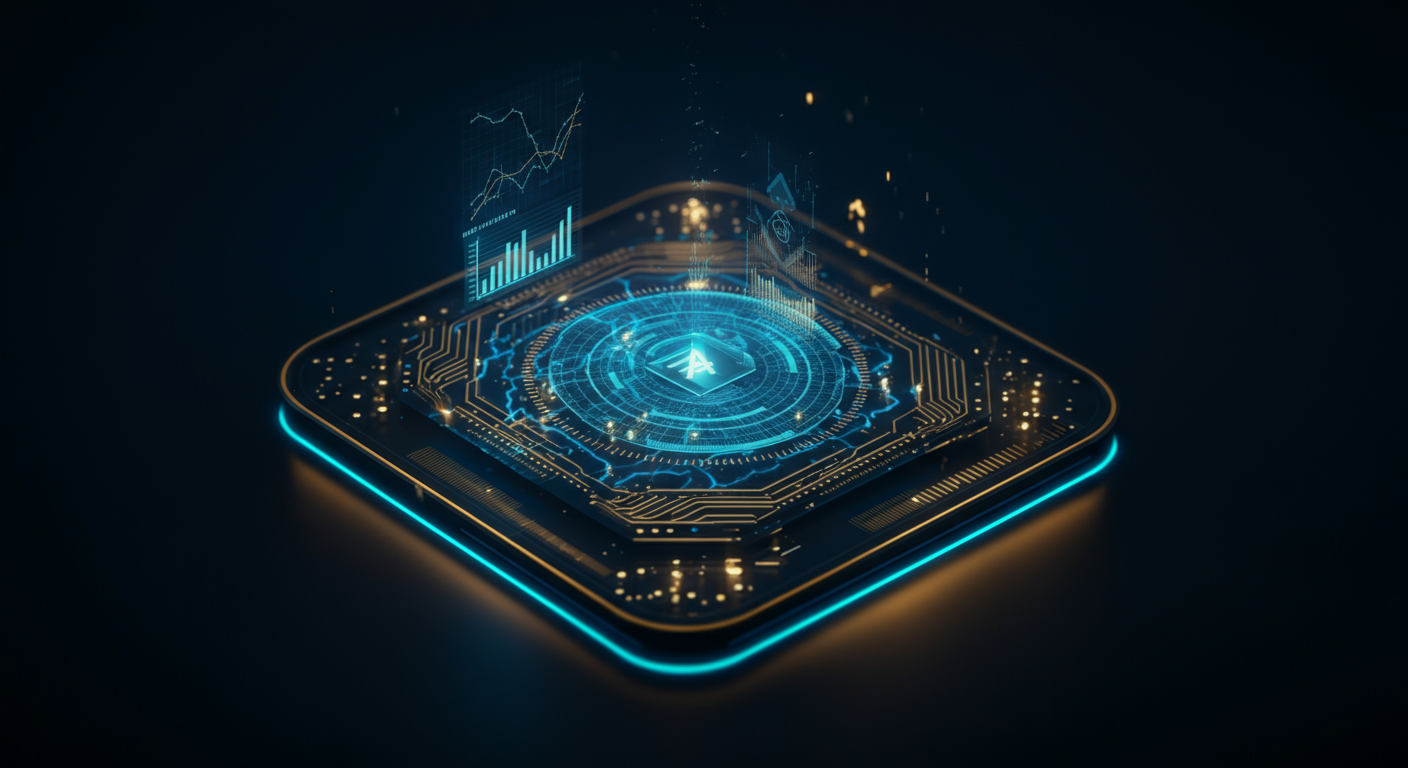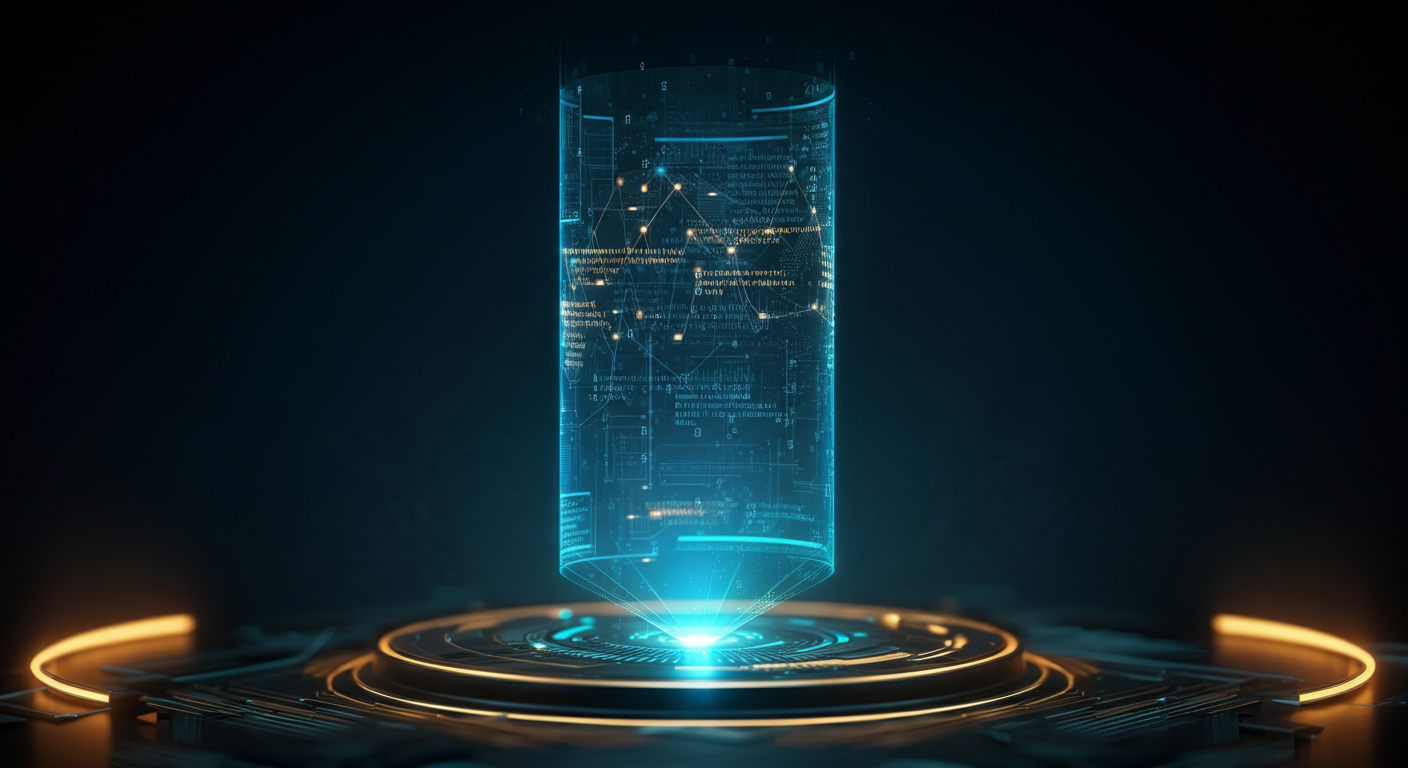AI Revolution: Gemini 3 vs. Claude Opus 4.5, Google's TPU Challenge to NVIDIA, and the Genesis Mission

The AI landscape is rapidly evolving, with competitive advantages consolidating among players controlling silicon, software, and infrastructure; stay ahead by understanding how technological advancements, regulatory shifts, and workforce transformations impact your AI strategy. Gain a competitive edge by focusing on proprietary silicon, integrated software-hardware stacks, and massive compute infrastructure to harness the power of agentic AI.
Competitive Model Wars: Gemini 3 and Claude Opus 4.5 Redefine AI Standards
The race to redefine AI standards heated up considerably in late November 2025, with two major model releases setting new benchmarks in capabilities and performance. Google's Gemini 3 Pro and Anthropic's Claude Opus 4.5 emerged as frontrunners, each showcasing unique strengths that cater to different aspects of the evolving AI landscape.
Gemini 3 Pro: A Google-Powered Giant
Released on November 18, 2025, Gemini 3 Pro represents a significant leap forward in Google's AI endeavors. What sets Gemini 3 Pro apart is its training on Google's cutting-edge TPU chips, particularly those leveraging the Ironwood architecture. This integration of hardware and software has clearly paid off, as evidenced by Gemini 3 Pro's impressive performance metrics:
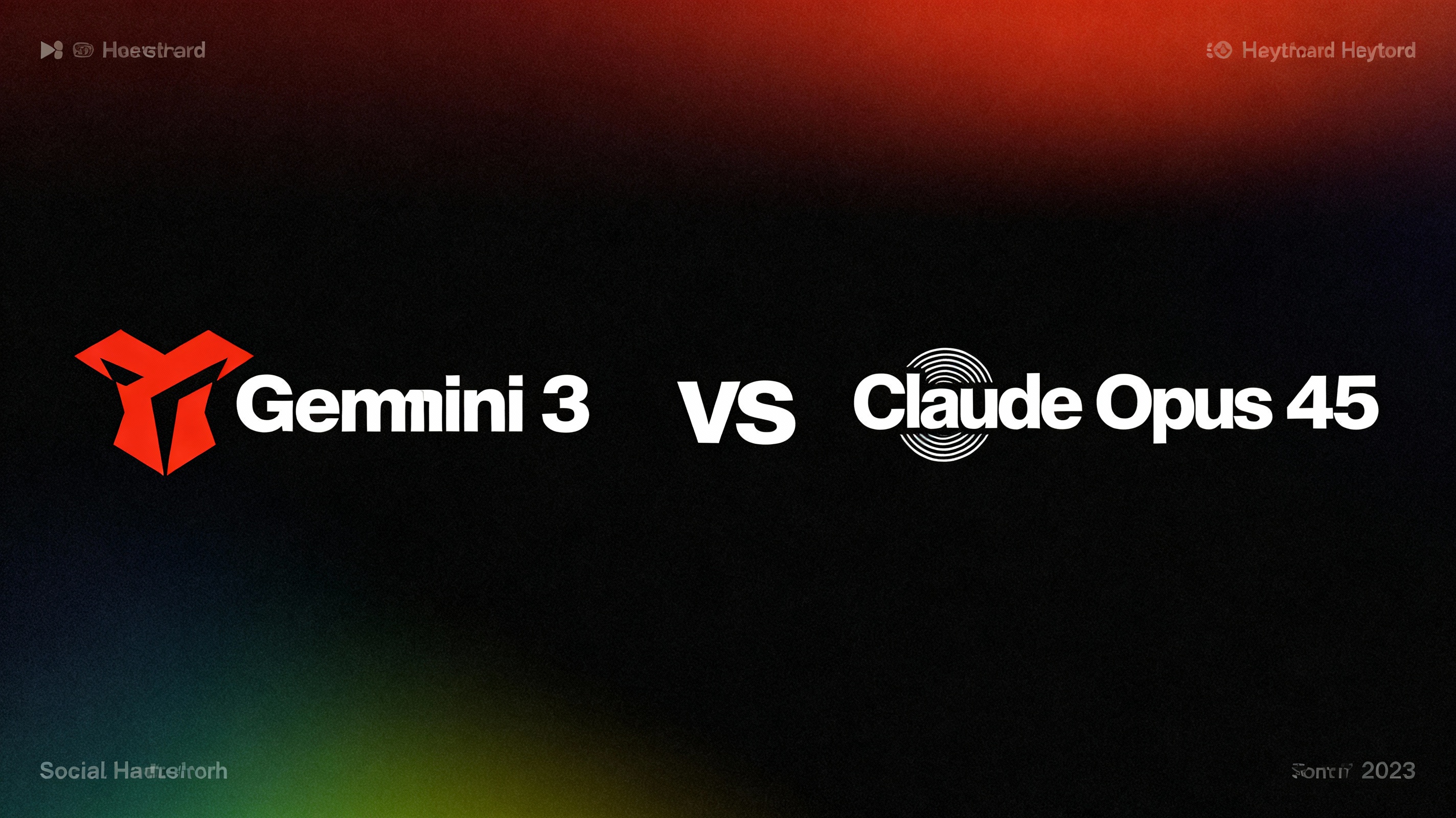
LMArena Leaderboard: A stellar score of 1501 Elo, positioning it among the top-performing models.
Humanity's Last Exam: Achieved 37.5% without relying on external tools, demonstrating strong inherent reasoning capabilities.
GPQA Diamond benchmark: An outstanding 91.9%, highlighting its prowess in answering complex, expert-level questions.
SimpleQA Verified: A solid 72.1%, indicating robust performance in general knowledge and question-answering.
Beyond these metrics, the planned integration of Gemini 3 with Google Search, which boasts 2 billion monthly users, could potentially transform how people access and interact with information, making AI-powered search assistance a daily reality for a vast audience.
Claude Opus 4.5: Autonomy and Efficiency
Just a week later, on November 24, 2025, Anthropic unveiled Claude Opus 4.5, a model focused on long-horizon autonomous task execution. This means Claude Opus 4.5 is designed to handle complex, multi-step tasks with minimal human intervention. Key highlights of Claude Opus 4.5 include:
SWE-bench Verified: Achieved an impressive 80.9%, showcasing its exceptional coding abilities.
Token Efficiency: Uses 48% fewer tokens than previous versions, translating to faster processing and reduced costs.
Human-Level Talent: Reportedly outperforms human candidates on engineering hiring exams, indicating a mastery of practical skills.
Claude Opus 4.5 truly shines in computer use automation, efficiently handling spreadsheets, presentations, and intricate research workflows. It seems like Anthropic is carving out a niche for AI that can handle complex digital tasks with minimal oversight.
The Enterprise AI Trade-Off
The contrasting strengths of Gemini 3 Pro and Claude Opus 4.5 highlight an interesting trade-off in the realm of Enterprise AI. While Gemini 3 Pro excels in reasoning and knowledge-based tasks, Claude Opus 4.5 prioritizes coding autonomy and practical application. Enterprises must therefore carefully consider their specific needs when selecting an AI solution. Do they require a broad understanding and reasoning capabilities, or do they need an AI adept at automating complex digital workflows?
An Era of Rapid Advancement
The fact that we're seeing such major model releases on a monthly basis demonstrates the accelerating pace of AI evolution. As models like Gemini and Claude continue to push the boundaries of what's possible, we can expect even more dramatic transformations in the way we live and work. This rapid progress underscores the importance of staying informed about the latest developments in the field, and understanding how these technologies can be leveraged to create value.
Silicon Supremacy: Google's TPU Architecture Challenges NVIDIA's Dominance
The AI revolution isn't just about algorithms; it's also a fierce silicon showdown, with Google's Tensor Processing Units (TPUs) mounting a serious challenge to NVIDIA's long-held dominance in AI compute. This isn't just an internal skirmish; it's a strategic shift with implications for the entire industry. Let's dive into how Google is positioning its TPU architecture as a viable alternative, and what that means for the future of AI.
Google's TPU Gambit
For years, NVIDIA has been the undisputed king of AI hardware, but Google has been quietly building its own custom silicon. Google's shift toward custom silicon with TPUs reflects a strategic move to optimize AI workloads, reduce reliance on third-party hardware, and gain a competitive edge. And it's not just for in-house use anymore. Alphabet is actively promoting TPUs to external clients through Google Cloud AI, signaling a clear intent to disrupt the market. This move is further amplified by reports that Meta is in discussions with Google to potentially integrate TPUs into their massive data centers. This would be a major coup for Google and a strong validation of the TPU architecture. Moreover, Google Cloud reportedly aims to capture 10% of NVIDIA's annual revenue through increased TPU adoption. These financial stakes highlight the intensity of this competition and Google's ambitions in the AI hardware space.
TPUv7 vs. NVIDIA Blackwell
The heart of Google's challenge lies in its latest TPU iteration: TPUv7, codenamed Ironwood. The TPUv7 architecture is designed to compete directly with NVIDIA's Blackwell platform, promising significant performance and efficiency gains. According to internal benchmarks, TPUv7 offers 1.4x better performance-per-dollar on specific AI workloads compared to its NVIDIA counterparts. More impressively, it boasts a 60-65% higher efficiency for AI inference tasks. This means faster and cheaper AI deployment, a compelling proposition for companies looking to scale their AI initiatives. These gains are attributed to architectural innovations like Google's Optical Circuit Switch networking topology in its TPU infrastructure, which enables faster communication between TPU chips, reducing bottlenecks and improving overall performance. It's worth noting that TPUs are already powering cutting-edge AI models like Gemini 3 and Veo, demonstrating their capabilities in demanding applications.
The Ecosystem Advantage
While Google is making headway, NVIDIA isn't standing still. The company benefits from significant technological momentum and a robust ecosystem lock-in. Developers are familiar with NVIDIA's CUDA platform, and many AI frameworks are optimized for NVIDIA GPUs. Overcoming this inertia will be a key challenge for Google. However, the allure of potentially lower costs and higher efficiency is proving tempting. Several major players, including Anthropic, Apple, and even OpenAI, are reportedly testing or renting TPU infrastructure. These partnerships could significantly boost TPU adoption and further validate Google's silicon strategy.
The battle for silicon supremacy is far from over. While NVIDIA currently holds a strong position, Google's TPUs represent a credible threat. With performance advantages in key areas and growing industry interest, TPUs could reshape the AI hardware landscape in the coming years. Staying informed on AI News is critical in such a rapidly evolving environment.

United States Launches "Genesis Mission"—AI for Scientific Breakthroughs at Scale
The United States has officially entered a new era of scientific exploration with the launch of the "Genesis Mission," a bold initiative aimed at harnessing the power of Artificial Intelligence to accelerate breakthroughs across a spectrum of critical fields. Think of it as a moonshot for science itself.
Genesis Mission: A Manhattan Project for the AI Age
Spearheaded by an executive order from President Trump, the Genesis Mission represents a massive national undertaking, echoing the scale and ambition of the historic Manhattan Project. But instead of splitting the atom, this project aims to unify the nation’s AI resources to solve some of its most pressing scientific challenges. At its core, the initiative seeks to compress timelines for discoveries that could redefine industries and secure America's technological leadership for decades to come.
The mission brings together a powerful coalition of the Department of Energy's National Laboratories, private sector AI leaders, and top academic institutions. This collaborative ecosystem is designed to foster innovation and ensure that cutting-edge AI technologies are readily available to researchers across the country. The goal? To create an environment where groundbreaking ideas can rapidly move from theory to practical application.
The American Science and Security Platform
The centerpiece of the Genesis Mission is the "American Science and Security Platform," an integrated AI platform designed to be the engine of discovery. This platform provides researchers with access to unprecedented high-performance computing resources, advanced AI modeling tools, and a treasure trove of vast federal datasets. Imagine a super-powered laboratory accessible to scientists nationwide, accelerating their ability to test hypotheses, simulate complex systems, and uncover hidden patterns in data. The platform will also leverage AI directories such as best-ai-tools.org to make sure that scientists have the best tools at their disposal.
The mission has identified several priority scientific challenges, including:
Advanced manufacturing: Creating smarter, more efficient production processes.
Biotechnology: Accelerating drug discovery and personalized medicine.
Critical materials: Developing sustainable alternatives to scarce resources.
Nuclear energy: Advancing fusion power and improving reactor safety.
Quantum computing: Building the next generation of ultra-powerful computers.
Semiconductors: Ensuring domestic production of cutting-edge chips.
Private Sector Partnerships and National Security
To ensure that the Genesis Mission remains at the forefront of AI innovation, the initiative is forging strategic partnerships with leading private sector companies. One notable collaboration involves NVIDIA, known for its GPUs and AI platforms, and Anthropic, creators of the Claude AI assistant, to develop and deploy advanced AI models tailored for scientific research. This collaboration ensures that researchers have access to state-of-the-art tools and expertise.
Recognizing the sensitive nature of much of the research involved, the Genesis Mission also places a strong emphasis on cybersecurity protections. Robust measures are being implemented to safeguard sensitive research data and prevent unauthorized access, ensuring the integrity of the scientific process. Ultimately, the Genesis Mission views AI-enabled scientific discovery as a national security imperative. By accelerating breakthroughs in critical areas, the United States aims to maintain its competitive edge in a rapidly changing world. From fusion energy to materials science, the potential impact of this initiative is vast and far-reaching.
xAI's Grok 4.1: Unexpected Challenger Captures AI Attention
Just when we thought the AI landscape was settling, a new contender has unexpectedly captured the spotlight: xAI's Grok 4.1. While Google's Gemini and Anthropic's Claude have been dominating headlines, Grok 4.1 has quietly been making waves with impressive benchmark results and innovative features.
Grok 4.1: The Dark Horse
On November 17, 2025, xAI rolled out Grok 4.1, a significant upgrade that has quickly climbed to top positions on various benchmark leaderboards. But what makes this AI model stand out from the crowd? It's not just about raw power; Grok 4.1 showcases notable improvements in crucial areas like hallucination reduction, emotional intelligence, and creative writing capability. These enhancements address key challenges in AI development, making Grok 4.1 a more reliable and versatile tool. Early evaluators seemed to agree, preferring Grok 4.1 over its predecessor, Grok 4.0, in a remarkable 64.78% of comparisons.
Emotional Intelligence and Reduced Hallucinations
Grok 4.1's prowess isn't limited to academic benchmarks. It notably leads on EQ-Bench3, a suite of emotional intelligence benchmarks, suggesting a heightened ability to understand and respond appropriately to human emotions. In an era where AI interactions often feel robotic, this is a significant step forward. Furthermore, Grok 4.1 has made strides in reducing hallucinations, a common issue where AI models generate false or misleading information. These hallucinations have decreased to near-record lows, instilling greater trust in the model's outputs. Think of it like this: previous versions of Grok might have occasionally told tall tales, but Grok 4.1 sticks closer to the facts.
Technical Innovations
Beyond its impressive performance metrics, Grok 4.1 incorporates several technical innovations that contribute to its success. xAI has prioritized faster response times, enhanced factual accuracy, and a more natural conversational flow. This focus on user experience makes Grok 4.1 a more enjoyable and efficient tool to interact with. These improvements are underpinned by advancements in xAI’s reinforcement learning infrastructure and a novel reward model system, enabling more effective training and fine-tuning. Furthermore, the model boasts a context window expansion, now supporting up to 256,000 tokens in standard mode and an astounding 2 million tokens in fast-inference mode. This larger context window allows Grok 4.1 to process and retain more information, leading to more coherent and contextually relevant responses. The focus on inference optimization and instruction-following further ensures that Grok 4.1 is both powerful and practical. Ultimately, xAI's Grok 4.1 showcases the power of rapid model iterations combined with a commitment to high quality, which means that it is only a matter of time before Grok 4.2 outperforms current market leaders.
Strategic Hardware Ambitions: Tesla, OpenAI, and Apple Position for Long-Term AI Competition
The AI race isn't just about algorithms and data centers; it's a high-stakes game of strategic positioning where tech giants are vying for long-term dominance through custom hardware and innovative device designs. Tesla, OpenAI, and Apple are all making bold moves that signal a shift from simply developing AI models to controlling the entire AI experience, from chip to user interface. This comprehensive approach aims to create a more seamless and integrated AI future. Tesla, under Elon Musk's ambitious vision, is emerging as a significant player in the AI silicon space.
Tesla's Ambitious Chip Roadmap
Tesla's journey into AI chip design is rapidly accelerating. The company's AI chip roadmap includes the development of the AI4, AI5, and AI6 chips, each representing a significant leap in processing power and efficiency. Elon Musk has set an audacious goal: to produce new AI chip designs annually and manufacture chips at volumes exceeding all other AI chips combined. This aggressive strategy underscores Tesla's commitment to becoming a self-sufficient powerhouse in AI hardware, crucial for its autonomous driving initiatives and broader AI ambitions. Tesla envisions a future where its vehicles and other products are powered by custom-designed AI, optimized for specific tasks and unparalleled performance.
OpenAI's "Peace and Calm" Device
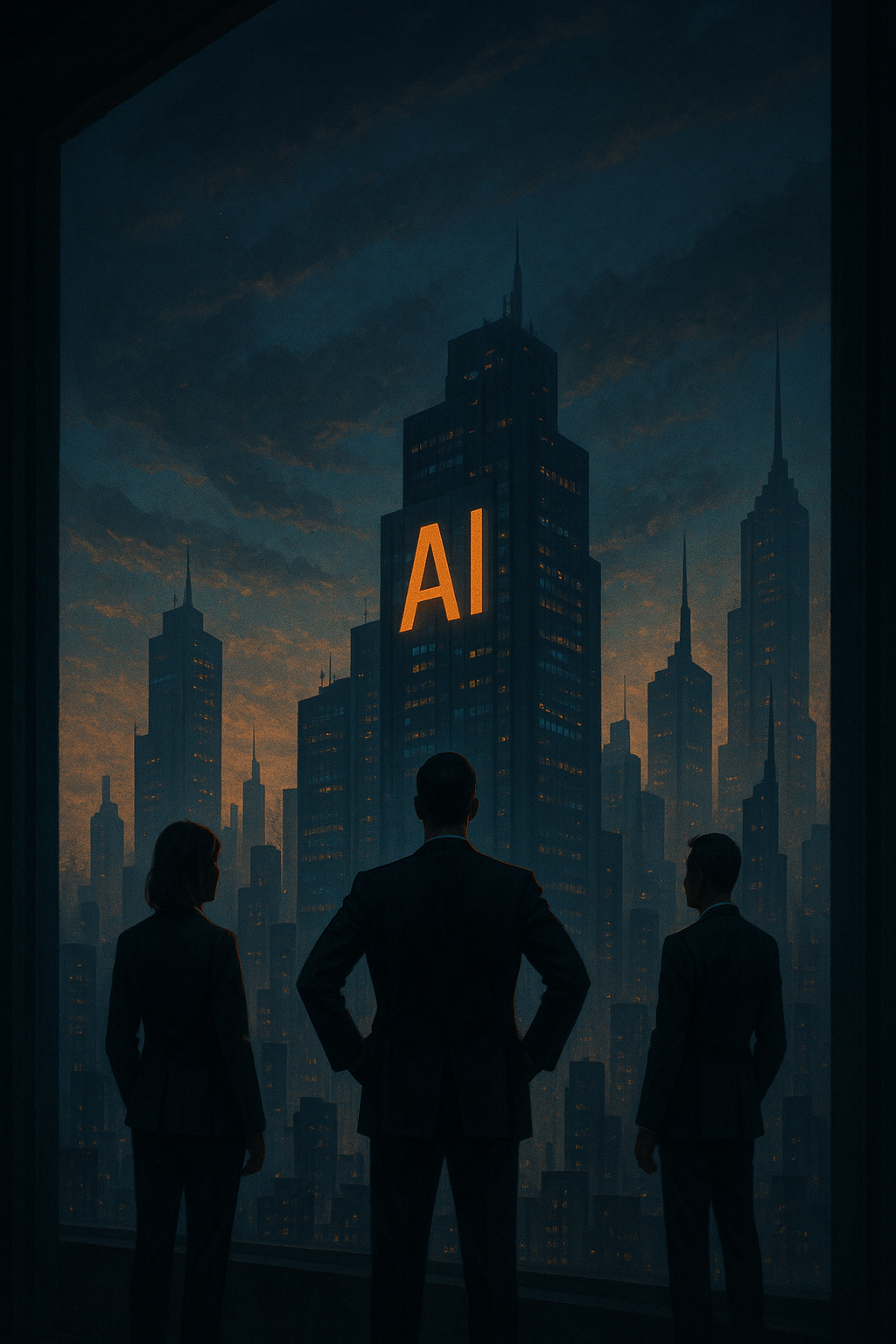
While Tesla focuses on raw processing power, OpenAI is taking a different approach, emphasizing user experience and mindful technology. In collaboration with Jony Ive, former chief design officer at Apple, OpenAI is developing an AI device rooted in a "peace and calm" philosophy. This screenless, pocket-sized device aims to provide contextualized information with minimal distraction. Imagine a device that anticipates your needs and delivers relevant insights without the constant barrage of notifications and visual clutter. This vision aligns with a growing desire for technology that enhances, rather than overwhelms, our lives.
Apple's AI-Enhanced Siri and Google Partnership
Apple, meanwhile, is doubling down on AI integration within its existing ecosystem. A key element of this strategy is a partnership with Google to license a 1.2 trillion-parameter Gemini model. This collaboration will enable Apple to rebuild Siri (codenamed "Linwood") with significantly enhanced reasoning and multi-step task capabilities. Imagine asking Siri to not only set a reminder but also to proactively gather relevant information and suggest related actions. This level of AI-powered assistance has the potential to transform how we interact with our devices and manage our daily lives. Tools like ChatGPT have already shown us the power of conversational AI, and Apple's integration of Gemini promises to bring similar capabilities to a wider audience.
Device Integration Is the Key
The AI competition is rapidly evolving, extending beyond models and inference infrastructure into long-term device design and user experience. The ultimate impact of AI on consumers will largely depend on how seamlessly it is integrated into the devices they use every day. Whether it's Tesla's custom chips powering autonomous vehicles, OpenAI's minimalist AI companion, or Apple's AI-enhanced Siri, the future of AI is inextricably linked to the devices that bring it to life. These strategic hardware ambitions represent a fundamental shift in the AI landscape, signaling a future where control over both hardware and software is paramount. Staying informed via resources like our AI News section will be critical as these developments unfold.
Emerging Markets and Venture Dynamics
Emerging markets are becoming increasingly important in the AI landscape, shaping venture dynamics and investment strategies. DeepSeek, for instance, has seen its R1 model gaining traction as a cost-effective alternative to more established AI models. However, this rapid growth isn't without its challenges. Reports have surfaced highlighting security vulnerabilities within DeepSeek's R1 model, with instances of code containing security flaws appearing when addressing politically sensitive topics. This raises concerns about the integrity and potential misuse of the technology, especially considering the reinforcement learning process reportedly incorporates Chinese internet censorship filters, influencing the model's responses and potentially skewing its perspective. This kind of behind-the-scenes filtering can result in outputs that are not only biased but also actively suppress certain viewpoints, a factor that users should definitely consider.
Despite these concerns, the AI and deep-tech sectors witnessed record funding momentum in November 2025, signaling strong investor confidence. Model ML, for example, secured a $75 million Series A funding round to advance its AI-driven finance automation solutions. Similarly, Tidalwave garnered $22 million to revolutionize AI mortgage processing. These investments highlight the growing demand for AI applications that can streamline complex processes and deliver tangible results.
Furthermore, Anthropic's massive $30 billion commitment to Azure infrastructure underscores the scale of investment required to support cutting-edge AI development. This move is a powerful demonstration of the belief that AI will become an indispensable element of cloud computing. The market is increasingly favoring revenue-focused, domain-specific AI applications, demonstrating that investors are looking for practical, real-world solutions rather than just hype.
In a strategic move to tap into the burgeoning Indian AI ecosystem, Google and Accel have formed a partnership to invest in promising Indian AI startups. This initiative reflects the broader trend of expanding U.S. and allied-nation tech influence into emerging markets. The focus is on identifying companies with practical applications, defensible intellectual property, and strong geopolitical partnerships. This ensures that investments not only generate financial returns but also contribute to a more secure and diversified global AI landscape.
Ultimately, the interplay between emerging markets, venture capital, and geopolitical strategies will define the next phase of AI innovation. As AI continues to permeate various industries, the ability to navigate these complex dynamics will be critical for success.
Regulatory and Workforce Implications
The rapid evolution of AI isn't just about technological leaps; it's also reshaping the regulatory landscape and the skills demanded in the workforce. This transformation presents both opportunities and challenges that require careful consideration.
The Rise of AI Fluency
One of the most striking trends is the meteoric rise of "AI fluency" as a sought-after skill. A recent study highlighted that it's currently the fastest-growing skill appearing in U.S. job listings. What does this mean? Employers are increasingly looking for individuals who not only understand how AI works but can also effectively leverage AI tools in their daily tasks. This isn't limited to technical roles; it spans across various industries, from marketing and finance to healthcare and education. The data underscores this point emphatically: there's been a sevenfold increase in the demand for AI fluency in job postings over the past two years. That’s not just a trend; it's a seismic shift.
Automation and the Shifting Sands of Work
Theoretically, AI technologies have the potential to automate a significant chunk of current work activities. Some analyses suggest that as much as 57% of U.S. work hours could be automated by existing AI capabilities. However, it's crucial to differentiate between task automation and wholesale job displacement. The more likely scenario is a redefinition of roles, where workers shift towards higher-value activities that require uniquely human skills like critical thinking, creativity, and complex problem-solving. Think of it as AI taking over the more mundane, repetitive tasks, freeing up human employees to focus on innovation and strategic initiatives. For example, n8n, a workflow automation platform, is becoming more popular. It assists businesses in streamlining operations by automating repetitive tasks and connecting various applications, thus freeing up human workers to focus on more strategic and creative endeavors.
Centralized AI Governance and Strategic Implications
On the regulatory front, there's a growing debate about the role of government in overseeing AI development and deployment. The previous administration signaled its intent to prevent states from implementing their own AI regulations, advocating for a more centralized approach. This reflects a belief that AI regulatory authority should be a strategic national asset, ensuring consistency and preventing a fragmented regulatory landscape that could stifle innovation. Centralization can streamline compliance for businesses operating across state lines and foster a more cohesive national AI strategy. But, it also sparks discussions about balancing federal oversight with local autonomy and the need for diverse perspectives in shaping AI governance.
The interplay between AI's technological advancements, its impact on workforce skills, and the evolving regulatory environment is complex and multifaceted. While AI undoubtedly brings the potential for increased productivity and innovation, proactive measures are needed to equip workers with the necessary skills and establish ethical and effective regulatory frameworks. This will ensure a future where AI benefits everyone and minimizes potential disruptions. Stay updated with the latest AI News to understand how these changes are unfolding in real-time.
Conclusion: Consolidation of Competitive Advantage

November 2025 will be remembered as a pivotal moment, where the threads of AI research, technological advancement, and strategic deployment wove together to form a new landscape. The key takeaway is the consolidation of competitive advantage among a select few players who have successfully integrated their capabilities across the entire AI stack.
From Frontier Labs to Production Powerhouses
The era of AI existing solely within the confines of research labs is drawing to a close. We're witnessing the transformation of these frontier labs into production-scale deployment centers. Companies that were once focused on theoretical breakthroughs are now laser-focused on delivering tangible, real-world AI solutions. This shift is driven by the increasing demand for AI applications across various industries and the growing availability of resources needed to deploy these solutions at scale. This drive towards deployment has caused custom silicon development to shift into more competitive product categories as well.
The Rise of the AI Oligopoly
Several factors have converged to create this environment. Government institutions are now actively coordinating AI deployment to achieve scientific and economic advantages. We've seen initiatives aimed at fostering AI innovation, streamlining regulatory processes, and investing in the necessary infrastructure. This government support provides a crucial tailwind for companies operating at the cutting edge of AI. The venture landscape has also changed, with investors increasingly favoring revenue-focused, domain-specific AI implementations over purely speculative ventures. These shifts emphasize the strategic importance of AI and the need for a coordinated approach to its development and deployment.
The winners in this new era are those who control the key ingredients: proprietary silicon, integrated software-hardware stacks, and massive compute infrastructure.
This consolidation of power doesn't necessarily spell the end of competition, however. Open-source models and emerging competitors continue to play a vital role in maintaining a dynamic and innovative ecosystem. These entities prevent the dominant players from becoming complacent and ensure that the benefits of AI are more widely distributed. In fact, tools like Hugging Face, a leading open-source platform for machine learning models and tools, allow smaller teams to access and build upon cutting-edge research.

The Dawn of Agentic AI
Looking ahead, the AI landscape is poised for another dramatic transformation. The industry is moving away from narrow task optimization and toward general autonomous capability. We're seeing the emergence of Agentic AI systems that can handle business-critical decisions with minimal human oversight. These agents will have the ability to learn, adapt, and act independently, further automating processes and driving efficiency gains. As AI systems become more sophisticated and capable, the need for robust ethical guidelines and safety measures becomes even more critical. This is the next major battleground in the AI revolution: ensuring that these powerful technologies are used responsibly and for the benefit of all.
🎧 Listen to the Podcast
Hear us discuss this topic in more detail on our latest podcast episode: https://open.spotify.com/episode/0uEdI0bNZIa68SouC9XRlc?si=jp-Al6weRDeYvvCDCDH2RQ
Keywords: AI, Artificial Intelligence, Gemini 3, Claude Opus 4.5, Google TPU, NVIDIA, Genesis Mission, xAI Grok 4.1, AI Chips, AI Models, AI Hardware, AI Regulation, AI Funding, AI Scientific Discovery, AI Workforce
Hashtags: #AI #ArtificialIntelligence #MachineLearning #DeepLearning #AINews
For more AI insights and tool reviews, visit our website https://best-ai-tools.org, and follow us on our social media channels!
Website: https://best-ai-tools.org
X (Twitter): https://x.com/bitautor36935
Instagram: https://www.instagram.com/bestaitoolsorg
Telegram: https://t.me/BestAIToolsCommunity
Medium: https://medium.com/@bitautor.de
Spotify: https://creators.spotify.com/pod/profile/bestaitools
Facebook: https://www.facebook.com/profile.php?id=61577063078524
YouTube: https://www.youtube.com/@BitAutor

Recommended AI tools

Your AI assistant for conversation, research, and productivity—now with apps and advanced voice features.

Open-weight, efficient AI models for advanced reasoning and research.
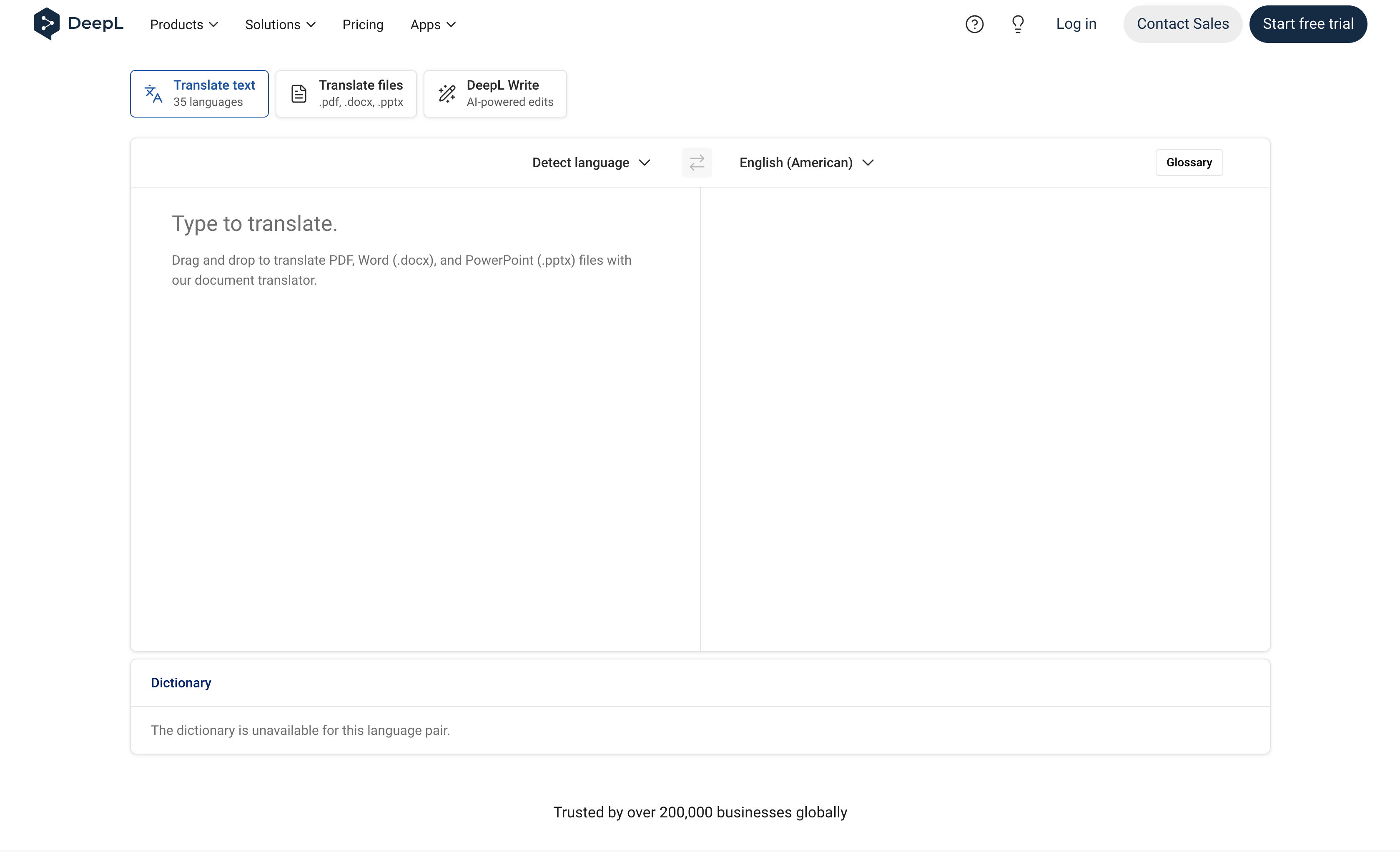
The world’s most accurate AI translator.
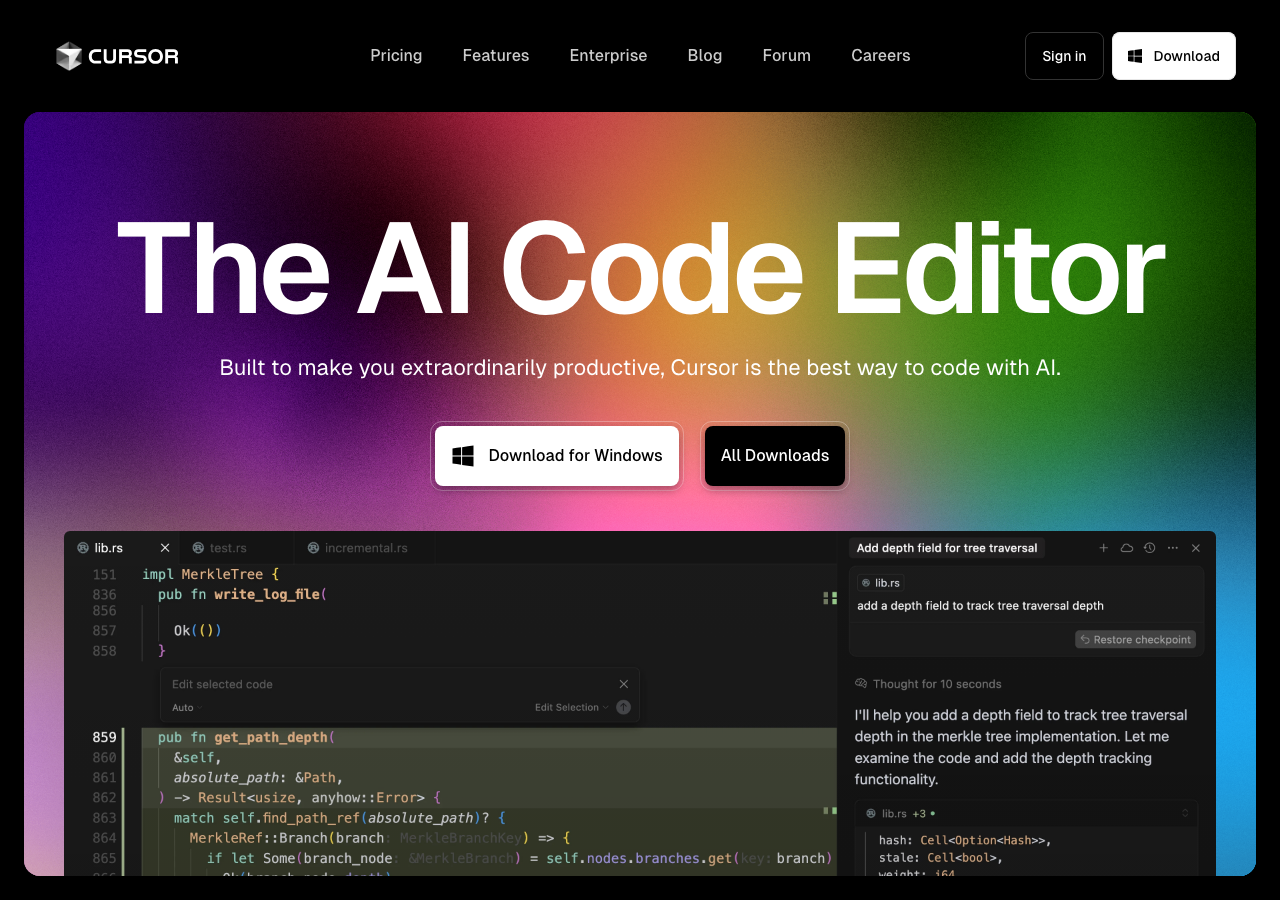
The AI code editor that knows your codebase

Unified AI and cloud for every enterprise: models, agents, infrastructure, and scale.

Your trusted AI collaborator for coding, research, productivity, and enterprise challenges
About the Author

Albert Schaper is a leading AI education expert and content strategist specializing in making complex AI concepts accessible to practitioners. With deep expertise in prompt engineering, AI workflow integration, and practical AI application, he has authored comprehensive learning resources that have helped thousands of professionals master AI tools. At Best AI Tools, Albert creates in-depth educational content covering AI fundamentals, prompt engineering techniques, and real-world AI implementation strategies. His systematic approach to teaching AI concepts through frameworks, patterns, and practical examples has established him as a trusted authority in AI education.
More from Albert